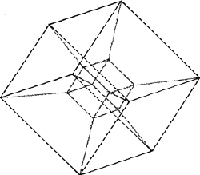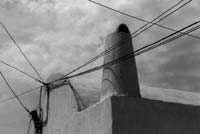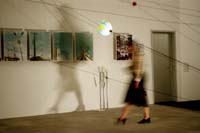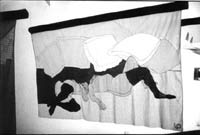London Biennale Pollinations
22nd August - 7th September 2003
Changing Channels is a cross-cultural program of performance, installation, film, music and visual art, taking place at various venues accross Berlin from 22nd August – 7th September. The Backfabrik, a large refurbished factory near Alexanderplatz, is planned as the central exhibition and event space. Video and film events will take place at Zurmoebelfabrik, a popular venue for art, music and film. Other locations planned as event space include the Kato, an unusual music venue beneath the Schlesisches Tor underground station and the Spannwerk along Paul-Linke Ufer.
Several galleries are also participating in Changing Channels: Schultz Gallery will be mounting an exhibition of paintings at the Intercontinental Hotel curated by Berlin artist Frank Schäpel, while the Kai Hilgerman Gallery will present performances. The Zero Gallery will feature the work of American artist Ryan S. Lemke. During the two weeks of the project an internet radio station, Changing Channels Radio, will be broadcast.
Over 60 artists, from all over the world, from Canada to the Dominican Republic, from Bulgaria to United States, are taking part in the program.
Changing Channels will bring the unpredictable spirit of the artist´s led initiative that was the London Biennale of 2000 and 2002 to the streets and galleries of Berlin, just as a previous manifestation outside of London, Rio Trajectories, did to Rio de Janeiro in 2001.
Changing Channels is curated and organised by Bill Allen and adam Nankervis, with help from Frank Schäpel, Tina Schimansky and artist´s collective DER ERSTE STOCK.
(DER ERSTE STOCK, erster-stock@gmx.net)
Ryan S. Lemke
“Border” London Biennale Group
Installation with barbed wire,
Zero Gallery Berlin
Vernissage 24th-25th August 2003
24th August - 5th September 2003
Ryan S. Lemke has created an installation that engages with the architecture of the space.
The abstract logic of mathematics forms an important aspect of Lemke’s practice. In this installation he has used barbed wire to suspend a cube known as the “hyper cube”; a geometrical form that is based on a proportion of thirds. From the eight corners of the gallery space wires are attached and converge towards the centre such that, another cube that echoes the rooms dimensions is formed.
This shape would thus be suspended so that the cube of barbed wire "floats" in the gallery space. On entering the space the viewer will be confronted by this weightless barbed wire figure, but also soon realize they are within the geometry itself which is under great tension to achieve the form.
The result is a self-referential structure that questions the physical and psychological expectations of boundaries. “I am interested in the physical and psychological message the piece conveys, the historical and social associations it conjures in the viewers mind and body, and the decisions they must take to deal with it”.
Lemke will also be showing silkscreen posters and studies of the “Borders”.
Written By Paul Abbott and Nina Madden
ZERO Gallery Presents:
Anna Krenz
"Unexpected Geometry"
Backfabrik, Berlin
22nd August - 7th September 2003
While walking around cities people usually pay attention either to what is on the eye level or what interests them - monuments, shops' windows, streets, buildings or other people. They hardly look at what is simply functional, usually without aesthetic value - things that have been created by the need of others in order to fulfil certain needs. These are often geometrical shapes that divide space and the view of the sky - whether they are telephone cables, electricity cables or all sorts of ropes and lines. Their function is set but their look is usually omitted and unwanted. But still, these geometrical shapes do exist and often do make a different "geometrical" drawing on surrounding buildings and landscape. This is a geometry that is unwanted to be seen and unexpected to be perceived.
Since the civilisation is producing large amounts of objects (and also waste) using enormous energy sources in this process, it is necessary to put attention to the energy flow and energy waste. The energy is shaped into the functional and very graphic objects - usually cables and transformers that give a sign and a note to the surroundings - there it is, energy flow. It is usually the case that people need energy but they do not want to think where is it coming from, they do not care about energy sources and damages the energy production process does to the environment. The energy is good to make things work, to run the fridge, to light the lamp, to switch the TV on, to produce food or all sorts of goods. The functional result of the energy is work and facility that all people need. But then, when the physical and material result of energy appears, it is usually spontaneous, ugly, unwanted and unexpected to be seen. But indeed it exists. Being aware of the things that exist even they are unwanted or less seen, that create a certain geometry in public spaces, and that have clear function which is not of an aesthetic value, it is important to be able to realise what these unexpected spatial objects mean. In case of electric cables - they inform about the energy flow, the energy flow that is at this moment of our culture - too large.
go to official website of Anna Krenz >>>
Longina Poterek - Krenz
„Da Capo Al Fine“
Spannwerk, Berlin
23rd August – 7th September 2003
The exhibition of 9 „sheets“ with application images of 9 stages of female life. From the young and naive „Green Heads“, through being „In Love“ up to the most important moment in a woman´s life - the „Great Explosion“. It is a story of a process of a girl getting mature, becoming a woman. Nine stages, like nine months of a pregnancy - a period of becoming naturally mature, when a woman explores herself and realises who she really is.
It was made on puropse - to show this story on real “sheets” - very intimate pieces of textile, that everybody has in his own bed. The relation between intimate, personal objects, life–stages of a woman and common feelings, shared emotions, gives a melange in which many women can find their own stories.
go to Longina Poterek - Krenz gallery >>>
 |
||
  |
||
 |